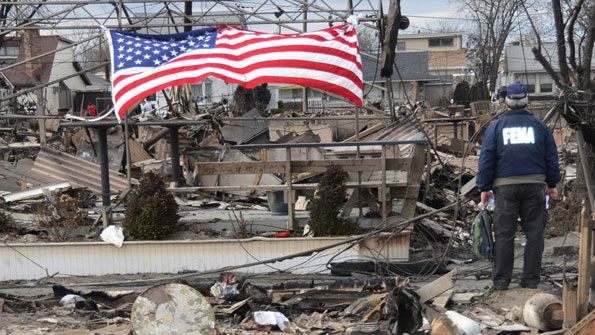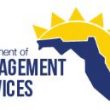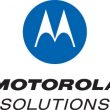Public-safety communications fare better than commercial networks after Superstorm Sandy
Commercial communications outages caused by Superstorm Sandy and subsequent flooding cannot be repeated on the proposed nationwide LTE network for first responders that will be built under the supervision of the First Responder Network Authority (FirstNet), public-safety advocates have said in the aftermath of the storm.
A week ago, the FCC reported that about 25% of commercial cell sites in the affected area were not operational, according to a statement from David Turetsky, chief of the agency’s public-safety and homeland-security bureau. As of yesterday morning, the percentage of cell-site outages was less than 9%, Turetsky said in a statement provided today to Urgent Communications.
An FCC spokesperson was unable to provide similar information about any outages suffered by public-safety LMR networks, and Turetsky has not mentioned these networks in his statements to the media. However, early indications from state departments of transportation indicate that public-safety agencies in the affected area have been able to maintain communications in the aftermath of Sandy, according to William Brownlow, telecommunications manager for the American Association of State Highway and Transportation Officials (AASHTO).
For the most part, public-safety LMR systems have remained operational, according to input Brownlow has received from the states of New York and New Hampshire, primarily because LMR towers have been hardened to withstand such conditions, with generators providing backup power when the commercial electric grid is down.
“The general takeaway from this is that public safety’s requirements are not the same as commercial providers—the need for backup generators is absolutely crucial,” Brownlow said during an interview with Urgent Communications. “I think that’s the message that needs to be made clear to FirstNet.”
New Hampshire’s department of transportation had seven of its 18 sites running on power provided by backup generation, according to a report provided to Brownlow. Getting additional fuel to a couple of the generators was a problem at one point, and a microwave antenna had to be realigned, but these issues were all addressed within 12 hours, according to the report.
In New York, there were some network problems, but the department of transportation reported “no real issues” in these areas, Brownlow said.
“They were using the talkaround feature on radio, which you cannot do on a cell phone,” he said.
Commercial wireless carriers do provide backup power to many key sites in their networks, but providing backup power to all sites is not an option for fiscal and logistical reasons—backup power can be expensive to maintain, and diesel generators are not allowed on most rooftops, which is where many cell sites are located.
“The sites built on buildings are the most vulnerable, as opposed to the ones built on towers, for two reasons,” mobile wireless consultant Andrew Seybold said during an interview with Urgent Communications. “Number one, buildings don’t withstand 100-mph winds the way towers do. Number two, you can’t put a generator on the roof, so you put a generator on the ground or in the basement, and it floods.”
There has been discussion of increasing reliability to first responders by also including network access to multiple commercial carriers, with the hope that at least one of them would have an operational system.
“Most of the towers that failed had two or three [commercial] operators on them,” Seybold said. “So, even FirstNet’s plan of multiple network operators in a given phone would not have helped the situation.”


















Unlike the cell sites around
Unlike the cell sites around the Gulf Coast, many of the carriers have never had the experienced people to design their cell sites for major storms. Having been one of those that has been involved in designing cell sites along the Gulf Coast, I know all the problems that the carriers have ignored.
The biggest problem that many of the ground mounted cell sites have failed to take into account is flooding. The property man, the physical design engineer, the electrical engineer and the tower engineer all need to spend some time down along the Gulf. Take a look at what is done there. Think about why each cell site is designed differently. Look around and take into account the lay of the land. Then go do some homework and find out what the 100 year flood level is. Build to that or greater.
I use to load up my towers with double the antenna capacity that the RF engineer would ask for. Then spec the tower to have 0.5 degree twist in 120 MPH sustained wind at 20 feet above the ground. Many will say this is way over kill. But never had any problems with the microwave during a hurricane.
We even used stainless steel bandit straps around the coax cables going up the tower every 25 feet or so. This way the coax will not unzip the snap in hangers during a hurricane. If you have ever looked at a tower after a storm, it is not that unusual to see the coax hanging from the top of the tower and just swinging in the breeze all the way down the tower.
We mounted the generator, fuel tank and electronics up above the 100 year flood water mark. your never going to repair any radio equipment that has been underwater. So the best plan is to keep it high and dry.
If you travel along the Gulf Coast, it is not unusual to see cell sites mounted on tall metal stands with a solid concrete base to hold it in place. A set of steps allow access to the platform where the generator and radio equipment is located.
The electrical power meters are an issue and need to be worked out with the local power companies. Generally after some sitting around a table with all parties, they allow the meters to be mounted up on the platform with everything else. You just need to put one of the power company locks on the entrance gate to the site.
Hope this gives some food for thought on how the cell carriers can improve the reliability of their cell sites.
Jim